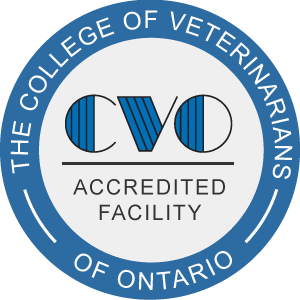Illustrated Articles
-
Chlorhexidine topical (brand names Chlorhex®, Novalsan®, ChlorhexiDerm®) is an antiseptic used to treat skin infections. It is used to treat surface bacterial and/or fungal skin infections in cats and dogs. This medication may be part of a combination product that includes other medications. Chlorhexidine topical comes in shampoo, liquid, ointment, and wipe form.
-
Chlorhexidine/hydrocortisone/trizEDTA topical (TrizCHLOR® 4HC) is a shampoo and spray conditioner used topically in cats, dogs, and horses to support animals with conditions such as superficial, itchy, bacterial and fungal skin infections (pyoderma); acute moist dermatitis (hotspots); and pododermatitis (skin infections of the foot).
-
Chlorhexidine/ketoconazole/TrizEDTA flush: otic (Mal-A-Ket® Plus) is a liquid antibacterial and antifungal solution used for topical treatment of localized bacterial and yeast infections in dogs and cats. The solution can be used specifically in the ears as a flush treatment.
-
Chlorhexidine/ketoconazole/TrizEDTA flush: topical (Mal-A-Ket® Plus) is a liquid antibacterial and antifungal solution used to manage localized bacterial and yeast infections in dogs and cats. It should only be used topically on the skin or in the ears.
-
Chlorothiazide/hydrochlorothiazide is given by mouth or injection and is used off label to treat nephrogenic diabetes insipidus, high blood pressure, fluid retention, and certain electrolyte imbalances in dogs and cats. Give as directed by your veterinarian.
-
Chloroxylenol topical, also known as PCMX, is a topical antiseptic used on the skin prior to surgery and in wound cleaning in cats, dogs, and exotic species. It has been used to treat bacterial, fungal, and yeast skin infections. It is toxic to aquatic species. All forms are applied topically directly to the skin.
-
Chlorpheniramine maleate is given by mouth and is used off label in cats, dogs, horses, ferrets, and birds to treat allergic conditions or as a mild sedative. Common side effects include sleepiness, although other side effects are possible.
-
Clarithromycin is given by mouth and used off label to treat certain bacterial infections in several animal species. Do not use in pets that are allergic to it or other macrolide antibiotics, in rabbits, gerbils, guinea pigs, hamsters, or horses greater than four months old.
-
Chocolate is toxic to dogs. While rarely fatal, chocolate ingestion often results in significant illness. Chocolate is toxic because it contains the alkaloid theobromine. Theobromine is like caffeine and is used medicinally as a diuretic, heart stimulant, blood vessel dilator, and muscle relaxant.
-
Cholangitis/cholangiohepatitis in cats refers to inflammation of the bile duct or a combination of inflammation of the bile duct, gallbladder, and surrounding liver tissue. The clinical signs, diagnosis, treatments, and prognosis of the conditions are outlined in this handout.


